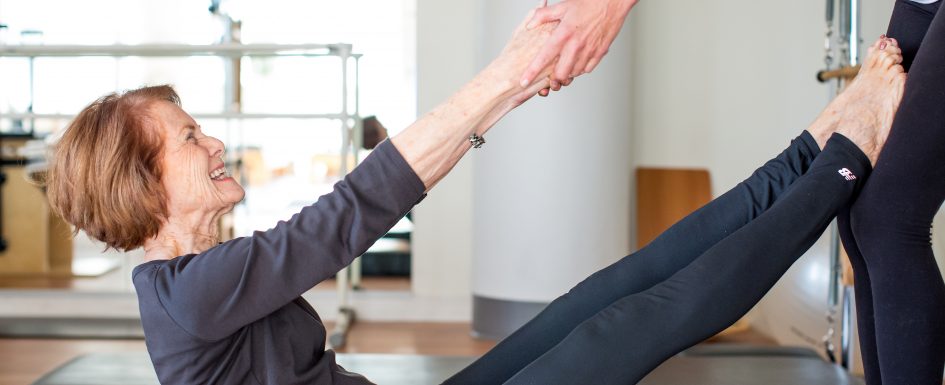The Six Principles of Pilates
Pilates is a series of exercises based upon six principles (noted below) developed by Joseph Pilates in the 1920’s. These principles integrate with one another to work the “powerhouse”, or core, which consists of the abdominal muscles, lower back muscles, pelvic floor, glutes and hip flexors.
The goals of Pilates is to strengthen the core for improved support; balance the body enabling proper alignment; and stretch the body allowing for flexibility of movement.
Strong physical health is important at any age; Pilates exercises are accessible to individuals from 15 to 85+.
The six principles of Pilates:
- Centering – is focusing on the source for all Pilates exercises: the powerhouse, the area of muscles primarily located between the lower ribs and the pubic bone. If a Pilates student does not begin each exercise by centering, their Pilates workout will be less effective.
- Breath – is essential to correct execution of movement during each Pilates exercise. Each exercise follows the rhythm of inhaling to initiate and exhaling to execute. The continuity of breathing becomes coordinated with the movement.
- Concentration – is being fully attuned to each Pilates exercise enables a student to fully focus on each Pilates exercise, to complete each exercise properly.
- Control – is conscious and deliberate movement of muscles during each Pilates exercise. It’s not speed but focused movement that yields results in Pilates.
- Precision – is completing each Pilates exercise in the proper form, leading to a balance between the various muscle groups of and supporting the powerhouse.
- Flow – is smooth, harmonious, controlled and precise movement. Flow comes with consistent practice of the Pilates exercises.

